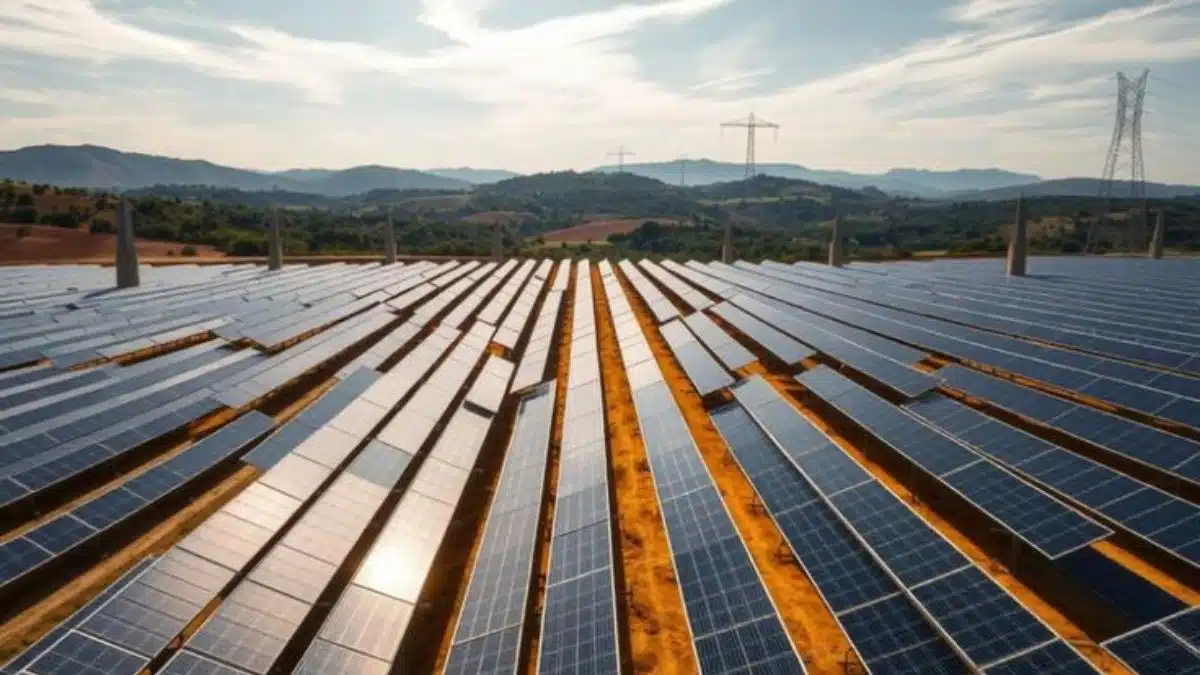Blogs
Harnessing the Power of the Sun: A Comprehensive Guide to Solar Energy and Installation

Harnessing the power of the sun offers a sustainable, eco-friendly energy solution for homeowners. Learn how solar energy works and the installation process to maximize benefits and reduce reliance on utility grids.
In recent years, the sun has emerged as a pivotal player in the quest for sustainable energy solutions. Solar power offers homeowners a chance to harness clean, renewable energy, reducing carbon emissions and reliance on utility grids. Understanding how it works and the installation process is key to maximizing its benefits. Let’s delve deeper into the fascinating world of solar energy and installation.
Understanding Solar Energy:
1. The Basics of Solar Energy:
Solar energy is the process by which sunlight is converted into electricity through the use of photovoltaic (PV) cells. These cells, typically composed of silicon, generate electricity when photons from sunlight strike their surface, causing the release of electrons. This phenomenon, known as the photovoltaic effect, creates an electric current within the cell, which can be captured and utilised to power electrical devices and appliances.
2. Solar Panels:
Solar panels, also referred to as solar modules, are the primary components of a solar energy system. These panels consist of multiple interconnected PV cells housed within a protective casing. Solar panels are designed to capture sunlight and convert it into usable electricity. They come in various types, including monocrystalline, polycrystalline, and thin-film, each offering unique advantages in terms of efficiency, durability, and aesthetics.
3. Inverters:
Solar panels generate direct current (DC) electricity, which isn’t compatible with most household appliances that use alternating current (AC). Inverters convert DC into AC, making it suitable for home use and grid integration. Different types of inverters—string inverters, micro inverters, and power optimizers—offer various performance and efficiency levels.
4. Lithium Batteries:
While solar panels generate electricity during daylight hours, there may be times when energy demand exceeds supply or when sunlight is unavailable, such as at night or during inclement weather. Lithium batteries serve as energy storage solutions, allowing homeowners to store excess electricity generated by their solar panels for later use. These batteries enable greater energy independence and resilience by providing a reliable backup power source during grid outages and emergencies.
Solar System Installation Process:
1. Site Assessment:
The installation process begins with a comprehensive site assessment conducted by a qualified solar installer. This assessment involves evaluating the property’s solar potential, considering factors such as roof orientation, tilt, shading, and structural integrity. Advanced tools and software may be used to analyse sunlight exposure and optimise the placement of solar panels for maximum energy production.
2. Design and Permitting:
Following the site assessment, a customised solar system design is created to meet the homeowner’s energy needs and site-specific requirements. This design includes the layout of solar panels, placement of inverters, electrical wiring, and other necessary components.
3. Installation:
After finalizing the design and obtaining permits, professionals start the installation process. They securely mount solar panels onto the roof using specialized racking systems that withstand various weather conditions. They route wiring from the solar panels to the inverters and electrical panel, ensuring energy flows safely and efficiently through the system. Trained professionals follow industry best practices and safety standards to complete the installation.
4. Monitoring and Maintenance:
The Benefits of Solar Energy:
1. Cost Savings:
Solar energy offers significant long-term cost savings by reducing or eliminating monthly utility bills and protecting against future electricity rate increases.
2. Environmental Impact:
Solar energy is a clean and renewable energy source that produces no greenhouse gas emissions or air pollutants during operation. By transitioning to solar power, homeowners can significantly reduce their carbon footprint and contribute to mitigating climate change and air pollution. Furthermore, solar energy helps conserve natural resources and promotes environmental sustainability for future generations.
3. Energy Independence:
Solar energy empowers homeowners to take control of their energy future by reducing reliance on centralised utility grids and fossil fuels. With a solar energy system and battery storage, homeowners can achieve greater energy independence, resilience, and security, especially in areas prone to power outages or natural disasters. By generating and storing their own electricity, homeowners can enjoy uninterrupted power supply and peace of mind, even during emergencies.
Conclusion:
Embracing solar energy represents a transformative step towards a cleaner, more sustainable energy future. Understanding solar energy and its installation helps homeowners make informed decisions. With advanced technology, lower costs, and growing environmental awareness, solar power offers a cost-effective, eco-friendly, and independent energy solution. So why wait? Explore the possibilities of solar energy today and unlock the boundless benefits of harnessing the power of the sun.
Prepared by: Optima Solar Systems Limited






























